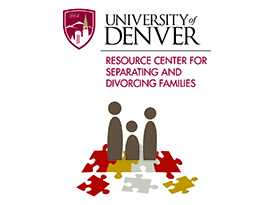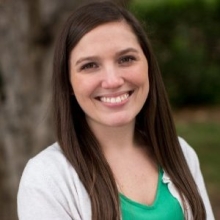The Resource Center Interdisciplinary Team: A Dual JD/MSW Student Perspective
 The Resource Center for Separating and Divorcing Families provides interdisciplinary services to separating and divorcing families, and is based on a model that IAALS developed and implemented on the University of Denver campus. The Resource Center is also an unparalleled teaching model for graduate students from diverse disciplines: psychology, social work, and law. This article is the second in a series of student perspectives on the Resource Center, its interdisciplinary learning environment, and the incredible impact the model is having on area families.
The Resource Center for Separating and Divorcing Families provides interdisciplinary services to separating and divorcing families, and is based on a model that IAALS developed and implemented on the University of Denver campus. The Resource Center is also an unparalleled teaching model for graduate students from diverse disciplines: psychology, social work, and law. This article is the second in a series of student perspectives on the Resource Center, its interdisciplinary learning environment, and the incredible impact the model is having on area families.
The Resource Center for Separating and Divorcing Families (Resource Center) provides an amazing opportunity for graduate students to gain real world experience not only working with clients but working with other professionals. This model requires a team of students from different disciplines to work together with the direction of interdisciplinary supervisors. Through this model, the Resource Center is able to provide a holistic support system to help families through one of the most difficult times in a person's life: separation and divorce.
As a dual JD and MSW student, the Resource Center seemed like the opportunity of a lifetime, allowing me to work on both my law and social work skills in one setting. In the end, the experience turned out to be a better and more valuable than I could have ever dreamed.
In the fall of 2013, I began working at the Resource Center as a law intern, primarily responsible for providing legal education and mediation services to clients. However, at the Resource Center, students do much more, including conducting intake interviews and service plan meetings. Throughout the process, emotional topics present themselves frequently, as can be expected; these clients are in various stages of grief and loss, and all of their motivations are fueled by different actions and emotions. Even as a dual JD/MSW student, these emotional reactions were difficult to sit with and took me out of my comfort zone. Quickly, I began to recognize my own uncomfortable tendencies, like fidgeting, moving around, and looking down at the clipboard. As the semester progressed, I was able to become more aware of my reactions in these situations and apply my social work skills. So, in essence, even while providing legal education and mediation in a law student role I was able to apply the skills I acquired in social work classes to better my practice with clients. This spring, I moved to a social work internship at the Resource Center, through which I not only provided mediation and legal education, but also began providing other mental health services on interdisciplinary teams.
Sometimes it seems as if the world of law and the world of social work are on opposite ends of the spectrum. In bouncing back and forth between the law school and the graduate school, I often must turn from an adversarial view of defending each side of a case to looking at underlying problems within a family to help them as a whole. At the Resource Center, I have not only had the opportunity to provide legal education and mental health services, but I have also gained insight into combining these two roles in order to provide the best support for my clients. In moving between the legal and social work perspective, it became easier to be more empathetic and understanding of emotional issues, while not losing logical and analytic skills.
The experience overall was an incredible opportunity to work with other students and professionals within each individual discipline. It was an even more valuable experience to work on interdisciplinary teams. By working alongside these other students, I have been able to grow in my ability to apply social work values and skills to a law practice, which will be an invaluable asset to my future in the legal field.


